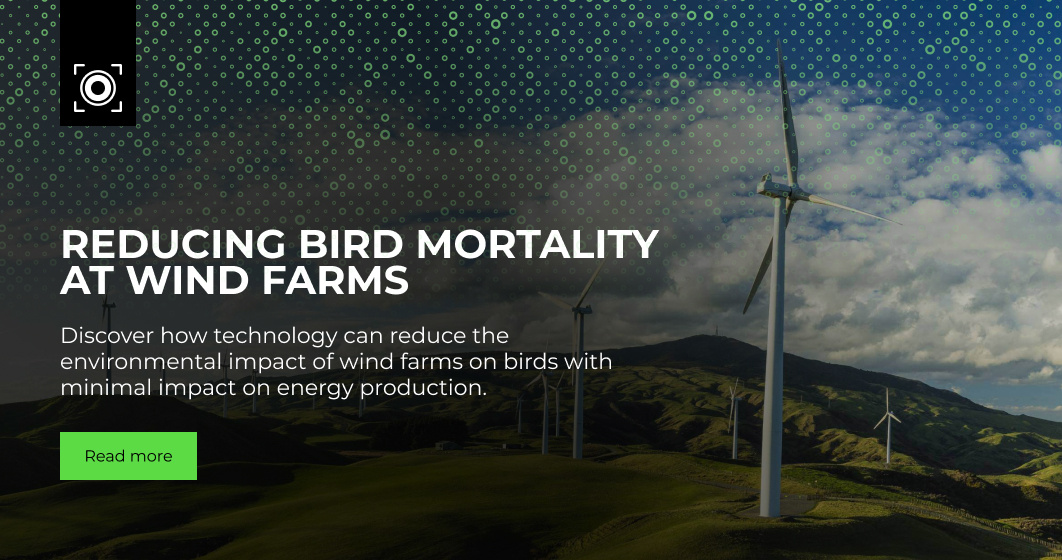Ask someone to name an animal that flies. It’s unlikely that bats will be their first answer. As creatures of the night, we don’t spot them regularly, but they’re a crucial part of our ecosystem.
We have them to thank for helping to pollinate some of our favourite food and drinks like bananas, vanilla, and even tequila.
They’re all highly skilled in the navigation department. They use echolocation to roam the night skies hunting prey and avoiding injury from collisions with objects hidden by darkness. Their echolocation works extremely well most of the time, but it’s not infallible.
Unfortunately, and far more seriously, not all collisions are harmless for the species. Collisions with wind turbines are contributing to dwindling populations. Bats are vulnerable and many types are endangered, so we must work together to protect them from unnecessary harm.
The Problem with Bats and Wind Turbines
The rise of wind power generation, crucial as it is to build a sustainable future, is a threat to wildlife.
Wind farm construction causes habitat loss and displacement, and both birds and bats are at risk of colliding with turbines. Bats can also suffer from barotrauma caused by air pressure changes around turbine blades.
Tens to hundreds of thousands of bats are estimated to die because of wind turbines every year in North America alone.
And even though bladeless wind turbines could be the future of wind farms, as long as bladed turbines are in operation, bats will be in danger. So, wind farms must mitigate the risk to protect this important species.
Detecting Bats on Wind Farms
The first step of protection is detection. And detecting bats presents wind farm operations with a unique challenge – bats are nocturnal.
Some wind farms use cameras to spot birds during daylight hours. These cameras aren’t effective at helping to detect bats because they’re designed to mitigate risk day and night. People are also required to monitor these cameras, so someone would have to watch them 24/7.
One way to get around this problem is to use avian radar to detect bats.
What is Avian Radar?
Avian radar is designed to track birds automatically. And it's also effective at detecting bats, too.
Radars can detect and log hundreds of bats at once, including their size, speed, direction, and flight path. They have a superior range, spanning kilometres of a wide area. And though they need line-of-sight to their targets, they don't need daylight, making them perfect for detecting and tracking bats at night. And, they gather detailed scientific data on bat activity that you can analyse and learn from.
Pros:
- Superior range
- Detailed, scientific data
- Operates 24/7, 365 days a year
- Capable of working in foggy conditions
Cons:
- Heavy rain can affect performance
- Requires line-of-sight between radar and target bats
- Can’t identify specific species, only size
Protecting Bat Populations and Operations
Demand for renewable energy is only increasing, so wind farms need to find a balance between protecting wildlife and operational uptime. That means having an action plan when bats are detected.
An efficient way to manage this is to integrate avian radar with automatic turbine shutdown functionality.
This uses data from the radar to switch turbines off whenever the system detects potentially hazardous bird activity. Shutdown commands are based on real-time data, so operations are only suspended for as long as there’s a threat.
This will help to prevent injury to bats and protects operations at the same time by helping to maintain maximum uptime and energy production.
A Solution for the Future of Bats and Wind Turbines
It’s crucial to make renewable energy in harmony with nature. It’s also crucial to have efficient renewable energy production. At wind farms, that means having reliable detection and mitigation to achieve the balance between turbine uptime and protecting wildlife.
Fortunately, implementing a radar system doesn’t just protect bats. It can be used to prevent bird deaths at wind farms as well.


